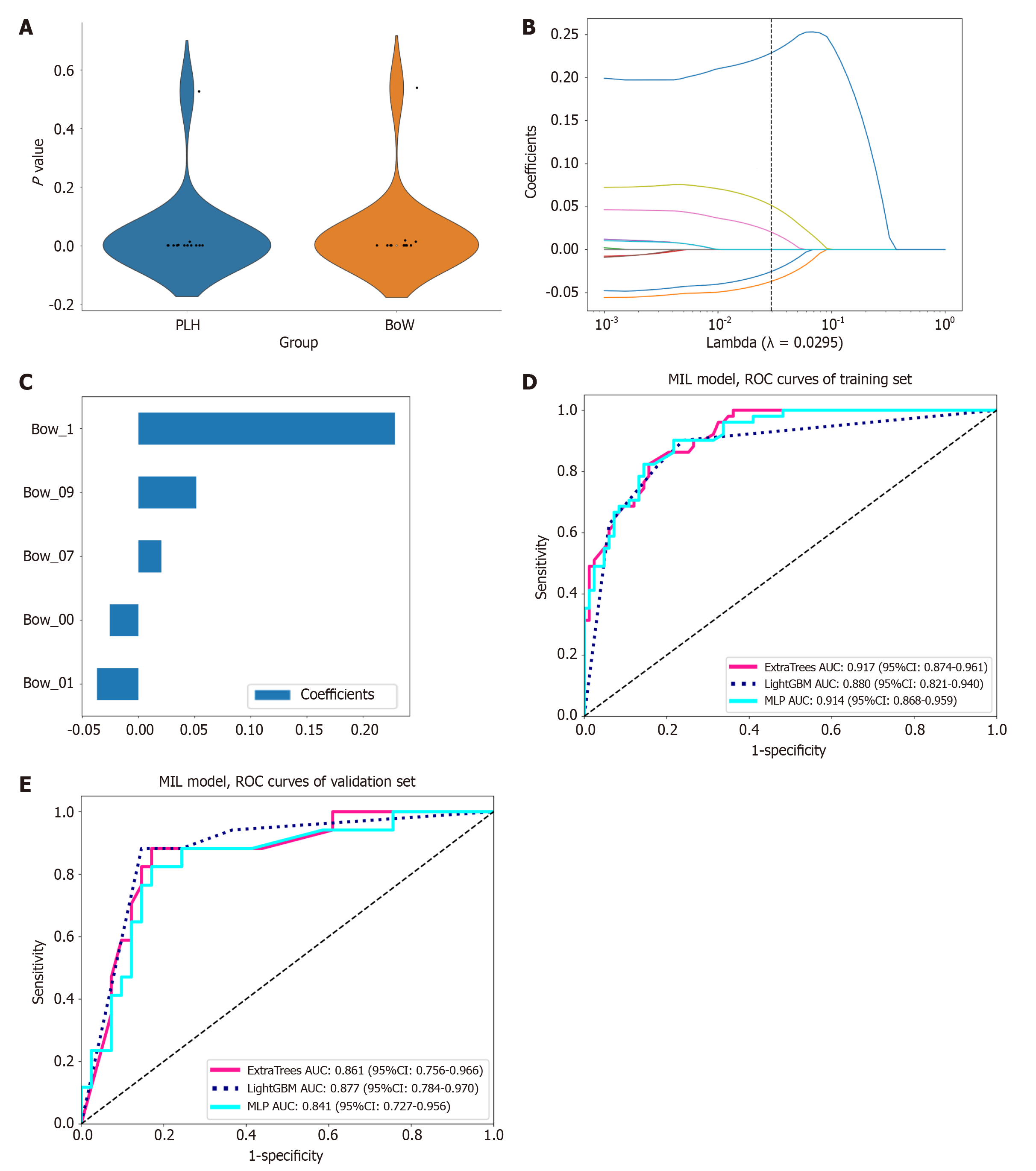Copyright
©The Author(s) 2025.
World J Gastroenterol. Aug 14, 2025; 31(30): 109186
Published online Aug 14, 2025. doi: 10.3748/wjg.v31.i30.109186
Published online Aug 14, 2025. doi: 10.3748/wjg.v31.i30.109186
Figure 4 Feature selection and receiver operating characteristic curve results in multi-instance learning modeling.
A: The distribution of multi-instance feature differences between microvascular invasion (MVI)-positive and MVI-negative groups; B: Least absolute shrinkage and selection operator regression analysis under 10-fold cross-validation; C: Feature weights after dimensionality reduction; D: Receiver operating characteristic (ROC) curves of three models: ExtraTrees (red), multilayer perceptron (MLP) (cyan), and LightGBM (blue) in the training set; E: Shows ROC curves of three models: ExtraTrees (red), MLP (cyan), and LightGBM (blue) in the validation set. PLH: Predictive likelihood histogram; BoW: Bag-of-word; ROC: Receiver operating characteristic; MIL: Multi-instance; AUC: Area under the curve; MLP: Multi-layer perception.
- Citation: Cen YY, Nong HY, Huang XX, Lu XX, Pu CH, Huang LH, Zheng XJ, Pan ZL, Huang Y, Ding K, Huang DY. Computed tomography-based deep learning and multi-instance learning for predicting microvascular invasion and prognosis in hepatocellular carcinoma. World J Gastroenterol 2025; 31(30): 109186
- URL: https://www.wjgnet.com/1007-9327/full/v31/i30/109186.htm
- DOI: https://dx.doi.org/10.3748/wjg.v31.i30.109186









